Ahu Tongariki
Easter Island - Rapa Nui
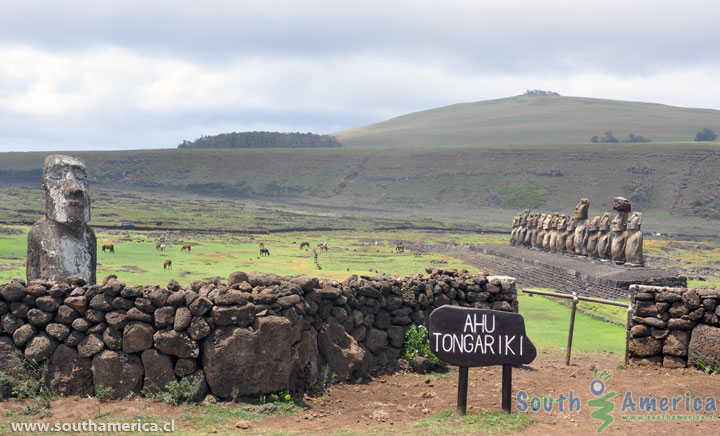
Ahu Tongariki is the largest Moai site of Easter Island. It has 15 moai lined up and includes the largest moai ever erected on the island (you can guess which one) weighing in at over 86 tonnes. You can however see another larger moai in the process of being carved out of the Rano Raraku volcano, but it was never finished.
You will notice that only the second moai from the right has a pukao (red hairknot) on its head. Originally the others also had them though now they are just lying on the ground closer to the entrance.
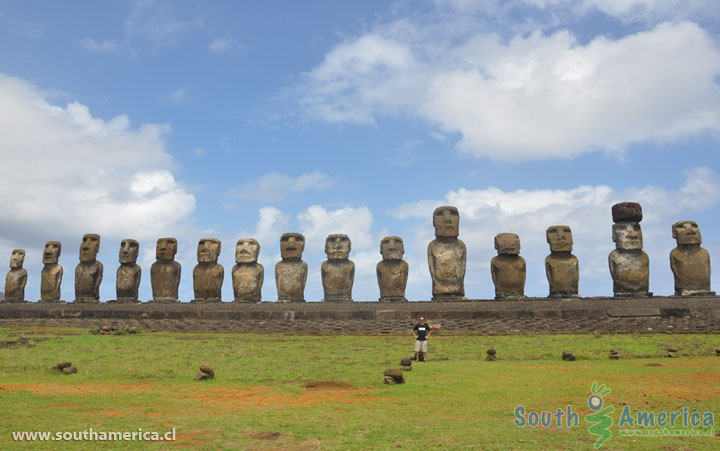
The fifteen Moai (with their pukao) were toppled in the 17th century (as were all other Moai on the island) during a tribal war and the eventual defeat of the "long-ears" tribe that had been ordering the other tribes to build more and more moai and each time bigger and bigger. Once the entire tribe had been killed, they then pushed all of the Moai off their bases, sometimes placing rocks where they fell to try and break them. Fortunately none of them were broken at Ahu Tongariki and they remained on the ground during the next centuries.
After the Valdivia earthquake of 22 May 1960 (the largest in recorded history at 9.5 on the Richter scale) a large tsunami took the fallen statues and the pukao and scattered then further inland, some a couple of hundred metres from their original location.
In October 1992 an agreement was signed between the Government of Chile and the Moai Restoration Committee of Japan to restore the Moai of Ahu Tongariki to their original standing positions. Work was finally completed in 1996 after help from Chilean archaeologists (Claudio Cristino was the director), Japanese archaeologists as well as that of a group of people of Easter Island.
At the entrance of the site you can see a (cracked) photo of a crane struggling to lift one of the "smaller" moai onto its base (see the photo below). According to our guide who helped out with the restoration, that was the only Moai the crane in the photo could lift and they had to bring in a much more powerful one.
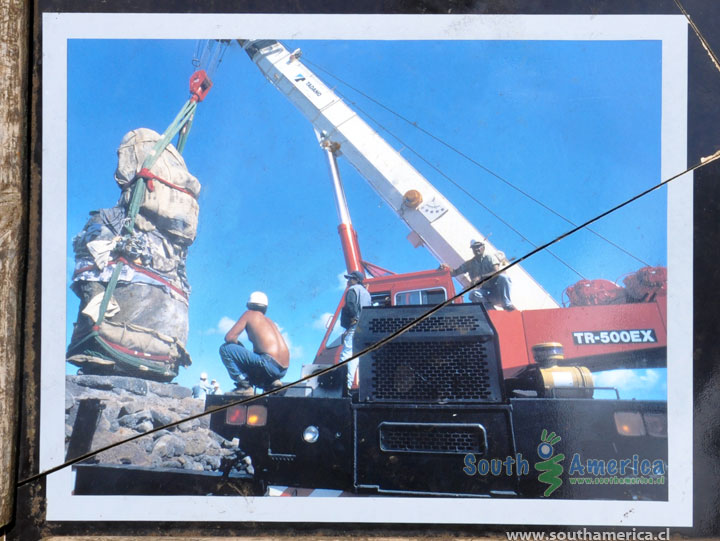
Ahu Tongariki is a great place to catch a photo of the Moai at sunrise with the sun coming up directly behind them.
Just near the entrance to Ahu Tongariki, and near the Pukao on the ground, you will find a couple of petroglyphs of turtles made in some rocks.
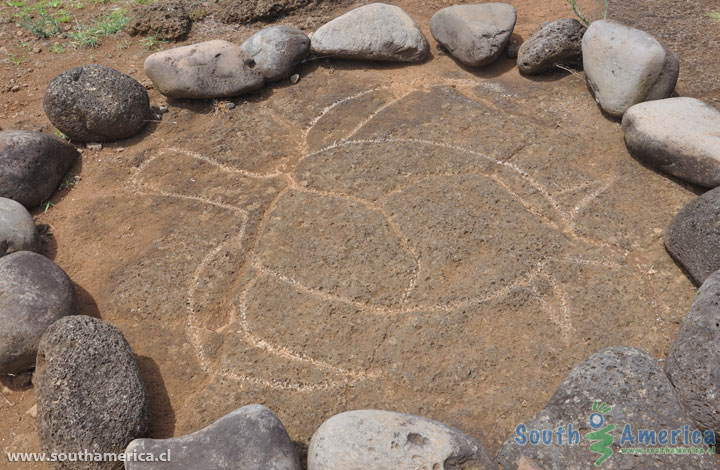
How to get to Ahu Tongariki
Most people visit Ahu Tongariki as a part of a tour though it is also easy to visit these moai by yourself (however you may miss out on the stories and information about the site from the guide).
It takes around 20 minutes to get there by car from Hanga Roa. You just take the road towards Anakena and just after you pass the airport you need to look out for the coastal road on the right (it is signposted) and follow it all the way to the site. It is also possible to get there by bike (there are no big hills) but there is no shade nor anywhere to buy water on the way so make sure you bring enough.
Photos of Ahu Tongariki
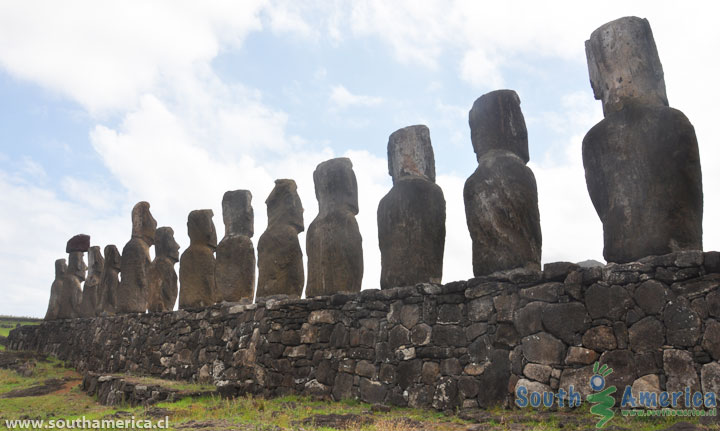
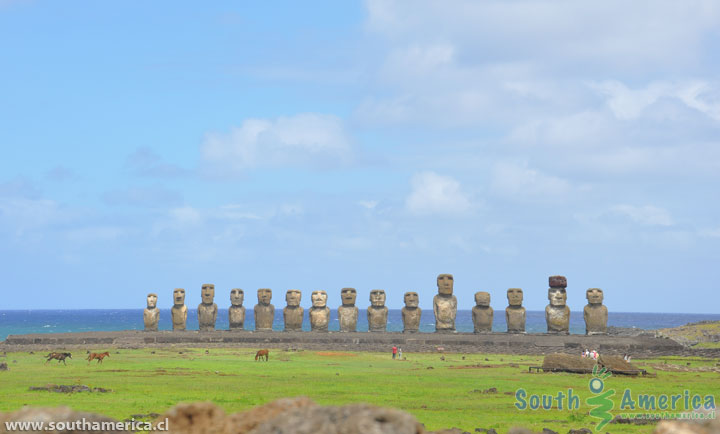
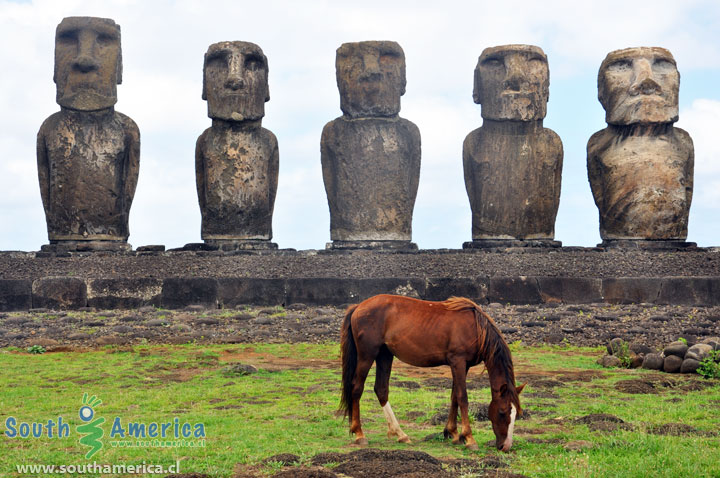
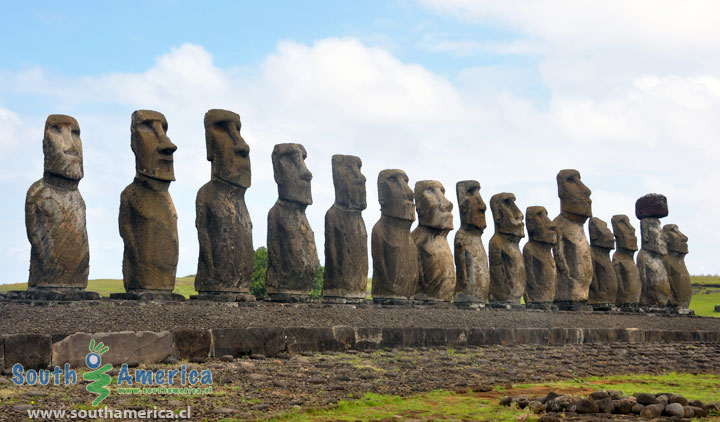
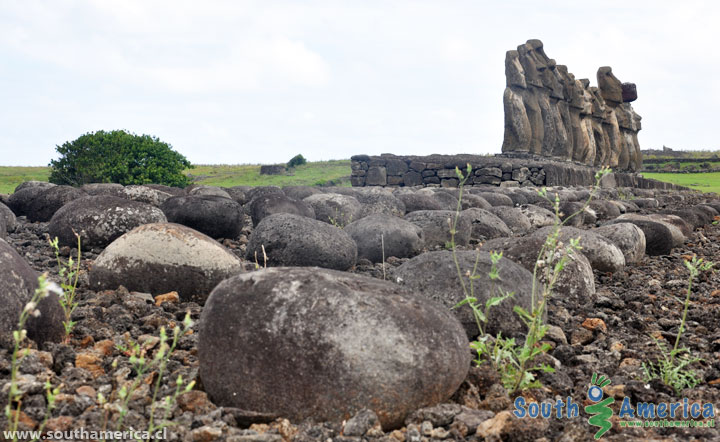
NOTE: Rob W. and Ange P. spent a week on Easter Island at the end of January 2013 to produce most of the information, photos and videos we have here.
If you found this guide about Ahu Tongariki on Easter Island interesting or useful, let others know about it.

